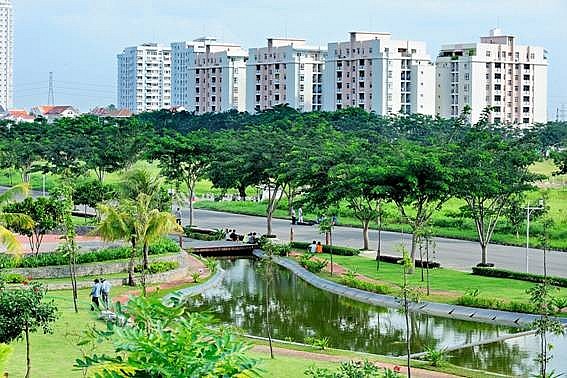The construction and real estate sectors are responsible for nearly 40% of global CO2 emissions and account for about 36% of total energy consumption compared to other sectors. Realizing Vietnam's green economic growth target requires the active participation and positive changes of real estate businesses.
The inevitable global trend
At the end of 2021, the Government of Vietnam approved the National Strategy on Green Growth in the 2021 - 2030 period, with a vision to 2050. This strategy sets out the goals of transforming the growth model towards greening economic sectors. economy, apply the circular economy model through economical and efficient exploitation and use of natural resources and energy, develop sustainable infrastructure to improve growth quality, promote advantages competition and minimize negative impacts on the environment.

An important fact shows that construction and real estate are among the industries with the largest CO2 emissions globally. The Global Status Report for Buildings and Construction 2021 shows that in 2020, the construction and real estate sectors account for 36% of global energy consumption and are responsible for 37% of total CO2 emissions related to global energy consumption. energy use. In particular, of those total emissions, building operations are responsible for 27% of total annual CO2 emissions.
Troy Griffiths - Deputy General Director of Savills Vietnam, affirmed that real estate is the field with the strongest impact on environmental aspects in ESG (Environment - Society - Governance). ).
“Every company listed on the Vietnamese market on any stock exchange, whether HNX or HOSE, is required to have a mandatory ESG report. High-rise buildings often have large emissions. As a result, most recent developments require ESG certification or meet ESG standards. Many new buildings and structures are developed to qualify for green certification or ESG, including industrial park projects. Therefore, any new development project needs to meet the criteria and levels required by ESG to increase competitiveness," emphasized Mr. Troy Griffiths.
Demand for green real estate projects skyrocketed
According to the Impacts report of Savills, the demand for green buildings in major cities around the world in the US, Europe and the Asia-Pacific region is increasing sharply. Even the supply of green standard projects in the world is not enough to meet the market demand.
Particularly for the office segment, Mr. Paul Tostevin - Director of Savills World Research, said that the demand for offices to declare carbon emissions in operations has skyrocketed. However, according to the analysis, the number of green standard offices in many cities is still quite limited.
“This will be an opportunity for real estate investors and developers to increase this model. Especially, in the context when the above locations are facing strict regulations of the city government in the green ambition goal "- Mr. Paul Tostevin added.
Chris Cumming - Savills Earth Director of Savills also said: “Future office upgrades are driven by tenants and investors. The investment market will have strong competition with green certified office buildings and pricing is very important. Tenants are looking for a sustainable solution that avoids demolishing positive features. Cities with green goals are increasingly paying attention to the impacts of carbon in construction and giving priority to equipping them with new modern equipment."
By Thoi bao Tai chinh Viet Nam